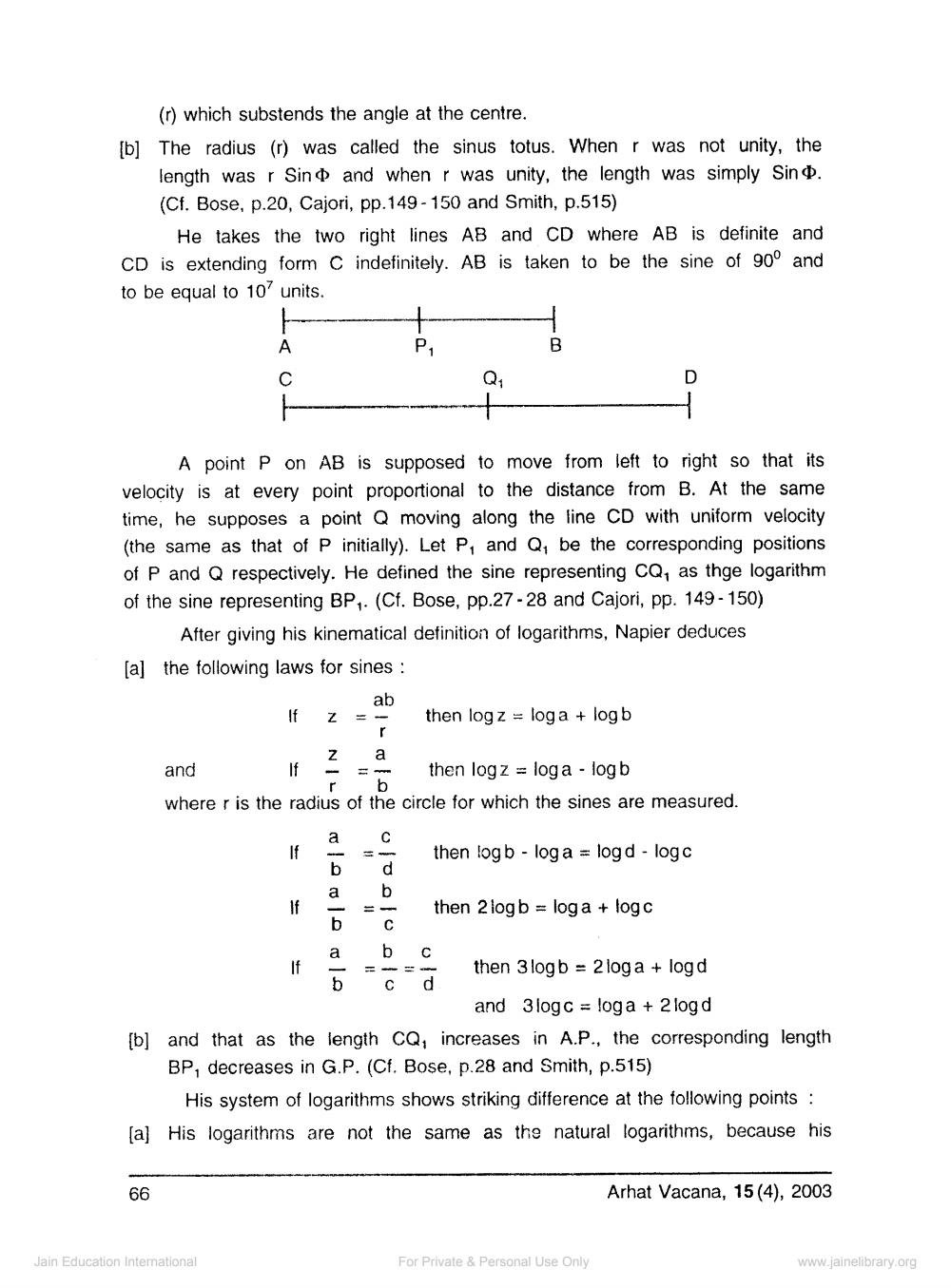________________
(T) which substends the angle at the centre. [b] The radius (1) was called the sinus totus. When r was not unity, the
length was r Sino and when i was unity, the length was simply Sin. (Cf. Bose, p.20, Cajori, pp. 149-150 and Smith, p.515)
He takes the two right lines AB and CD where AB is definite and CD is extending form C indefinitely. AB is taken to be the sine of 90° and to be equal to 10' units.
A point p on AB is supposed to move from left to right so that its velocity is at every point proportional to the distance from B. At the same time, he supposes a point Q moving along the fine CD with uniform velocity (the same as that of p initially). Let P, and Q, be the corresponding positions of P and Q respectively. He defined the sine representing CQ, as thge logarithm of the sine representing BP. (Cf. Bose, pp.27 - 28 and Cajori, pp. 149-150)
After giving his kinematical definition of logarithms, Napier deduces [a] the following laws for sines :
ab
If
Z
then log z = loga + logb
а and
then log z = log a - logb where r is the radius of the circle for which the sines are measured.
а с
then logb - log a = log d - logo
olooooo
а нь
then 2 logb = log a + logo " ь с a b c
then 3 logb = 2log a + logd b c d
and 3logc = loga + 2 logd [b] and that as the length CQ, increases in A.P., the corresponding length
BP, decreases in G.P. (Cf. Bose, p.28 and Smith, p.515)
His system of logarithms shows striking difference at the following points : [a] His logarithms are not the same as the natural logarithms, because his
66
Arhat Vacana, 15(4), 2003
Jain Education International
For Private & Personal Use Only
www.jainelibrary.org




